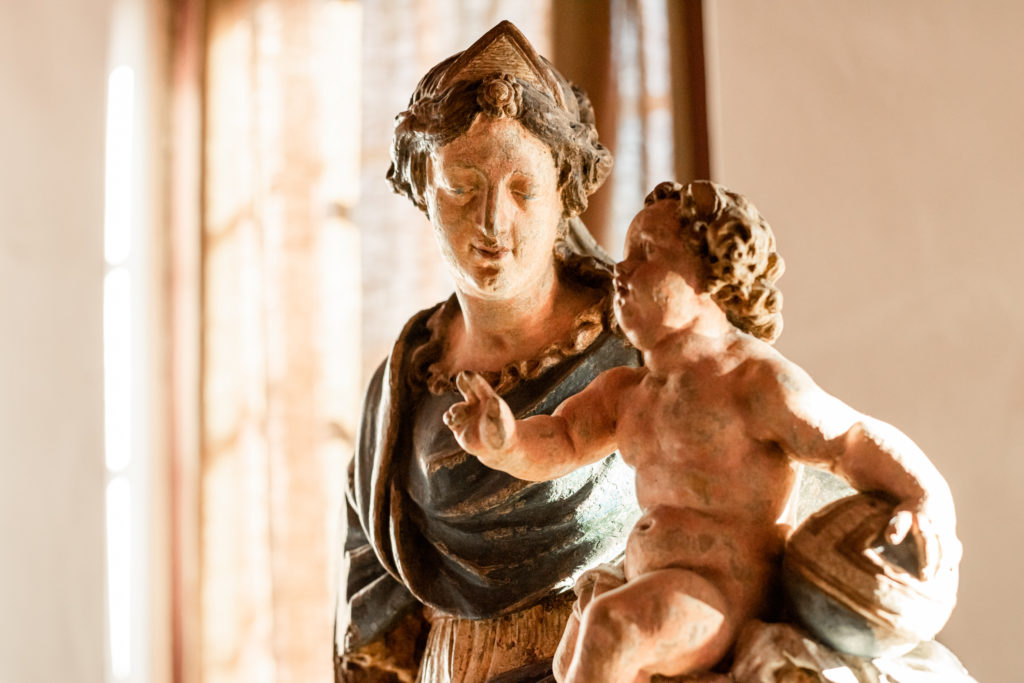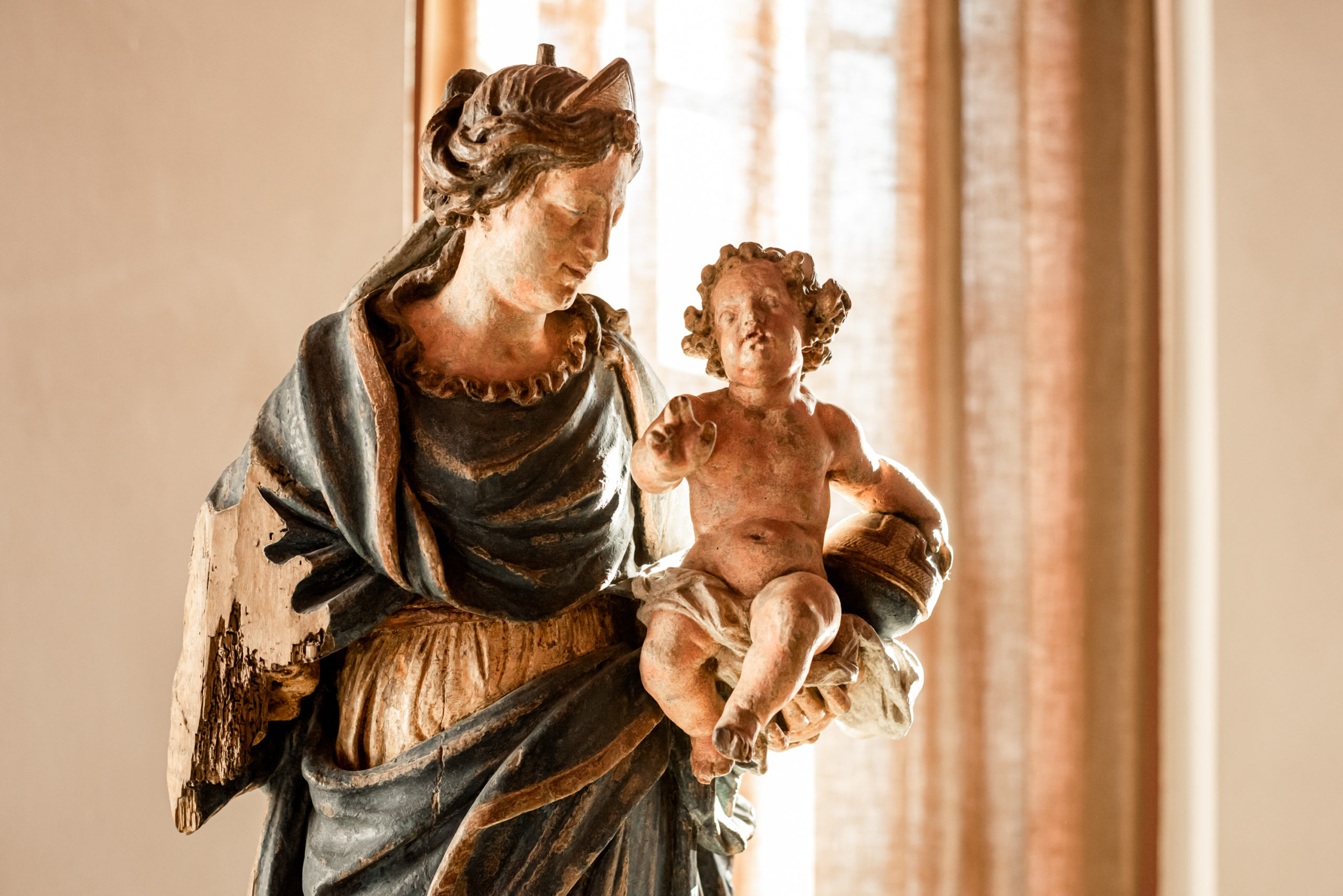and Maria
Unwritten Stories (Part 2)
In restoration, experts sometimes make the most beautiful discoveries. This became apparent recently, for example, during the restoration of the two paintings by Adriaen van de Velde, to which we will devote the entire next newsletter of Our Lord in the Attic Museum. Also during the renovation and expansion of the museum, a few years ago, remarkable things came to light thanks to restorations. That is why this newsletter focuses on two mythological boy figures and Mary.
[Het verhaal gaat verder onder de afbeelding.]

The two putti, because those are the boy figures, have stood on a side wall of the attic church for many years in a row. Until they were taken from their trusted place for restoration. When curator Robert Schillemans and his colleagues took a closer look at the two statues, it turned out that the strange recesses in the plinth fitted exactly into the base of the columns on either side of the main altar. They experienced a little sensation at that moment.
happy figurines
The two gracefully designed putti are clearly inspired by the same creatures in the altarpiece by Jacob de Wit, which is prominent in the attic church. Putti (plural of putto), unlike angels or cherubim, have no Christian background. They stem from Greek and Roman mythology. They were incorporated into Christianity during the Renaissance.
In addition to their resemblance to the putti in De Wit’s painting, it is also remarkable that the two figurines are actually candlesticks. “I don’t know of any other churches with putti as light bearers,” remarked Robert Schillemans after the discovery.
However, it turned out that there was a lot wrong with the wooden figurines, which date from the middle of the eighteenth century. They had been repainted over and over again, resulting in a very restless image, with a lot of paint loss and difference in relief. “As a museum visitor, you mainly saw the deviations, while you just want to see two cheerful statues.”
This has been the case again since the restoration, carried out by Aleth Lorne. The two putti have been on display for several years now where they belong: on either side of the altar. At the same time, Aleth Lorne also took care of the restoration of the statue of the Virgin Mary. This required an amount of fifteen thousand euros, for which the museum could appeal to the Friends.
lovely mother
The statue of Mary – Mary with Child on a crescent moon – dates from the late seventeenth century. The crescent moon is a reference to the dogma of the Immaculate Conception of Mary. The serpent that Mary tramples with her foot symbolizes heresy.
The aim of the restoration of the statue of Mary was to make it ‘readable’ again, as Robert Schillemans put it. “Especially at her feet, you saw a lot of strange restlessness. The snake was almost out of sight. It was necessary to disrupt, as it is called in technical terms. The damage to Mary’s face obscured the view of a lovely mother with a laughing son. As a viewer you want to know what you are looking at.”
Viewers already had the image at the end of the eighteenth century, according to a fairly rare written source that Schillemans subsequently discovered. A tract from 1791 states that the statue of the Virgin, surrounded by thirty to forty candles, ‘can be seen from every back in the Church’. How this is possible with an image that is currently completely invisible from the church was a mystery to the curator. For example, restorations not only yield interesting discoveries, but often also new riddles.

